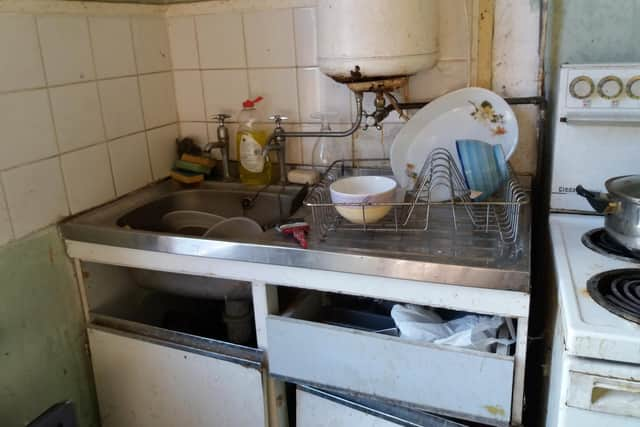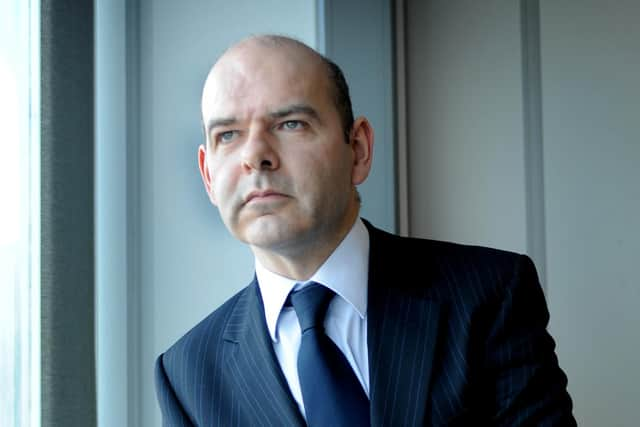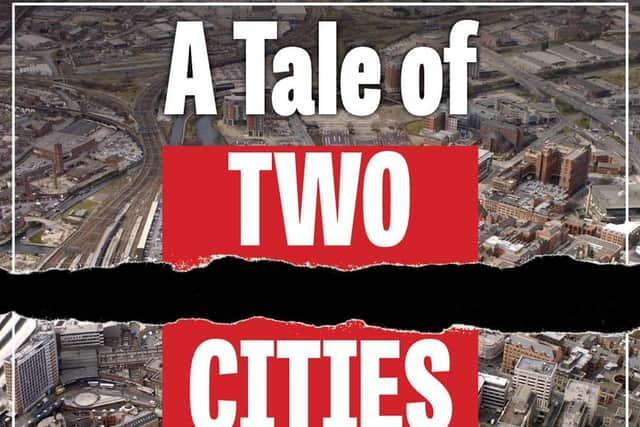This is how long it takes to get a council house in different parts of Leeds


This is the reality and the struggle for desperate families to get a council house in Leeds.
This is the challenge facing a single parent with three children – classed as a priority – in Leeds looking for “urgent re-housing”.
Advertisement
Hide AdAdvertisement
Hide AdFor some, the situation is even worse and the wait is longer.


In the latest instalment of the Yorkshire Evening Post’s ‘A City Divided’ series, Emma Ryan looks at the housing crisis in Leeds, how Right To Buy has decimated council housing stock leading to rogue private landlords cashing in and how people are being forced to choose paying rent over buying food.
In the last 30 years the council housing stock across the city has reduced by around 35,000 homes. Some is due to demolition of poor quality houses but mainly due to the Right To Buy scheme that was introduced as part of the Housing Act 1980, brought in by the then Conservative government.
Waiting Lists


Neil Evans, director of housing for Leeds City Council, said: “Whatever we are putting in, and we aim to do 300 homes a year, it is not replacing the numbers that are going from our stock.”
Advertisement
Hide AdAdvertisement
Hide AdHe said there is a much reduced supply of homes to rent but this has also led to people staying put in council properties – once they eventually get one.
Mr Evans said: “There is not the same turnover that there used to be and there are a few reasons for that. There has been enormous investment in council homes in the last 15 years and quality has improved, choice-based lettings mean housing managers don’t just put people where they want, people bid for properties.”
However, under that scheme, statistics reveal that for a property on King Alfred’s Drive in Moortown, there was a 196 week wait and 563 people or families bidding for it.


On Calverley Lane in Bramley, 301 people wanted that house and it took 129 weeks to get it.
Advertisement
Hide AdAdvertisement
Hide AdThere was a 194 week wait for a house at Naseby Gardens in Burmantofts with 424 people hoping they would get it.
Meanwhile, in other parts of the city, houses are much ‘easier’ to come by.
At Thorpe Road in Middleton there was a two week wait and 28 bids for a property and a fortnight to wait and 59 bids for a house at Tanside Drive in the Killingbeck and Seacroft ward.
Polly Neate, chief executive of the national housing charity Shelter, said: “The failure of successive governments to build enough social homes has sent us headlong into a housing emergency, with more than a million households languishing on waiting lists across the country.
Advertisement
Hide AdAdvertisement
Hide Ad“The government has a real chance to improve the lives of millions by investing in a new generation of social homes. That’s why we’re urging them to back our plan for three million more social homes over the next 20 years. Now is the time to make sure social housing is fit for the future and available to anyone who needs it.”
Private Rents
However, in the meantime, “decades of neglect” when it comes to building affordable homes has “forced” families to pay “toe-curling” private rents to live in often overcrowded and unsuitable conditions but this has still led to a situation where the numbers of PRS households has doubled in the last 20 years to 11 million nationally.
In Leeds it makes up 20 per cent of the city’s housing sector, yet it is claimed that housing benefit does not cover the cost of rent in 97 per cent of cases and in 32 per cent of cases, the payment doesn’t cover rent for even the lowest quality accommodation.
People on the lowest incomes are paying for the most expensive type of housing, creating a Catch 22 where some house-holders have to choose between paying to put a roof over the heads of themselves and their children – or to feed them.
Advertisement
Hide AdAdvertisement
Hide AdShelter deals with around 40,000 face-to-face appointments a year and 40,000 over the phone. A recurring theme is that parents are struggling to cope day to day with poor quality housing and children are falling behind at school.
Selective Licensing
Leeds City Council says this is an issue it is addressing by trialling new ‘Selective Licensing’ powers in Beeston and Harehills where private landlords have to adhere to certain criteria and meet basic requirements for tenants.
Mr Evans said: “Some of the properties are a real concern. This gives us the ability to require that to get a licence they have to have an inspection to check standards meet the legal requirements. That does not apply across all of the city. We have to demonstrate the areas are meeting certain criteria. They are both (Beeston and Harehills) very deprived, have high levels of PRS and we have tried other means to improve areas with landlords but it didn’t work.”
It comes as council housing inspectors can only act in the PRS if they get a complaint but many renters are vulnerable and scared to “make a fuss” for fear of eviction, he added, while Shelter questioned the effectiveness of selective licensing.
Advertisement
Hide AdAdvertisement
Hide AdMs Neate, of Shelter, added: “Too many private renters suffer at the hands of a minority of rogue landlords, so licensing can be a useful way for councils to identify bad practice. But they’re little use if councils don’t have the resources to then crack down on poor conditions because of government budget cuts.
“So, to ensure councils have all the tools they need to tackle poor housing in their area, the government must provide them with the proper funds to do so.”
